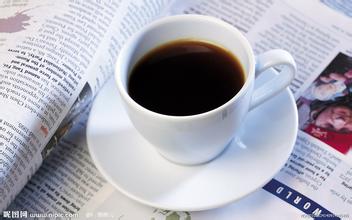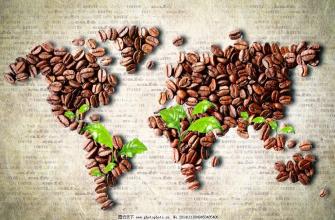Honey treatment Coffee beans Sun-washed Flavor Description Treatment method Production area Manor introduction
Description of Flavor of Honey-treated Coffee beans in Solar Water washing
1. Natural solarization (Natural/Dried-in-the-Fruit)
The process of this method is the simplest. The fruit begins the process of sun drying without treatment after picking. This is the oldest method of treatment in existence. This method is still used in places such as Ethiopia and Brazil. Natural solarization is most common in areas where water resources are scarce. The drying process usually lasts about 4 weeks. The method of handling must be very strict to ensure that the coffee does not lose any flavor. The natural sun method requires the local climate to be extremely dry. In some areas, people use dryers to assist in the drying process of coffee fruit (the hot air of the dryer can speed up the drying process and help people control the degree of drying).
Natural sunlight can retain the fruity aroma of coffee fruit. When you taste this kind of coffee, you will find that the coffee has a fruity aroma and a brighter taste. After drying, people will use special machines to remove the shell of the surface layer. This process is called drying and shelling (Dry Milling).
two。 Washing method (Washed)
In the process of washing, the peel and pulp of the fruit are treated with a special desizing machine and the coffee beans are peeled off. The coffee beans then enter the fermentation tank for fermentation treatment so that the mucous membrane is no longer sticky. The sugars in the mucous membrane are decomposed during fermentation. Depending on the fermentation method, the fermentation time is usually 12 hours to 6 days (some growers use the watering system to ferment coffee beans. This method is called the Kenyan washing method (Kenyan method) and usually lasts for several days). It is extremely important to decide when to stop fermentation. Once the coffee is overfermented, the taste of the coffee will become too sour. Once the sticky material in the mucous membrane is decomposed, it will be washed down with a lot of water. (the waste water from the raw bean treatment process is considered to be the source of pollution in the coffee industry. Today, advanced technologies are being developed in many areas to recycle and filter the waste water produced by this process. Water shampoo was born in the 19th century, also known as "wet processing".
A tightly controlled fermentation process increases the acidity of the coffee and is reflected in the final taste of the coffee. But as long as the coffee is washed immediately after the fermentation process, the taste of the coffee can be improved and has a bright sour taste.
3. Natural washing (Pulped Natural)
This method is extremely common in Brazil. The natural washing method is very similar to the water washing method, except that the natural washing method uses a high-pressure washing machine to remove the mucous membrane of the coffee surface, thus skipping the fermentation process. Several raw coffee processing companies in Brazil and Colombia have patented this method and have become local natural water system processing monopolies. The amount of water used in this method is much lower than that of washing hair, so some people are used to calling it "semi-drying (Semi-Dry)". Because there is no fermentation, coffee beans do not exist (or only have a very low risk of fermentation), and the overall quality of coffee is more constant. Unfortunately, the taste of coffee tends to be flat because it is not fermented. As a result, growers will not use natural washing for ultra-high quality coffee beans. Most raw bean purchasing companies also rarely buy coffee processed by natural washing.

Important Notice :
前街咖啡 FrontStreet Coffee has moved to new addredd:
FrontStreet Coffee Address: 315,Donghua East Road,GuangZhou
Tel:020 38364473
- Prev

Introduction to the extraction method of gold in coffee: the ratio of water to powder
Insufficient coffee extraction ratio: coffee solids are not extracted enough to produce a light, boring aroma. Visually, it is a fast and large-volume extraction, and coffee oil is a uniform light yellow tiger spot and miscellaneous spots: the main visual cue for good extraction. The tiger spot is formed by the contrast between dark and light coffee oil in the coffee stream; ideally, it appears at the beginning of the coffee, always
- Next

Introduction to the ratio of taste water to powder of Yunnan small-grain coffee price brand
Yunnan small grain coffee price brand taste water and powder ratio of Yunnan coffee in China is mainly concentrated in Baoshan, Dehong and Pu'er. Although the main varieties are basically Kadim, but due to the local microclimate, soil altitude and other natural reasons, their tastes are also very different. Because Baoshan belongs to the dry-hot valley of Nujiang River, its coffee is rich in taste, rich in aroma and sour.
Related
- What brand of black coffee is the most authentic and delicious? what are the characteristics of the flavor of the authentic Rose Summer Black Coffee?
- Introduction to the principle and characteristics of the correct use of mocha pot A detailed course of mocha pot brewing coffee is described in five steps.
- Which is better, decaf or regular coffee? how is decaf made?
- How much is a bag of four cat coffee?
- How about four Cat Coffee or Nestle Coffee? why is it a cheap scam?
- Which is better, Yunnan four Cats Coffee or Nestle Coffee? How about cat coffee? is it a fake scam? why is it so cheap?
- How about Cat Coffee? what grade is a hoax? which instant coffee tastes better, four Cat Coffee, Nestle Coffee or G7 coffee?
- Process flow chart of coffee making-Starbucks coffee making process what coffee tastes good at Starbucks
- The top ten best coffee beans in the world Rose summer coffee or Tanzanian coffee tastes good
- Yunnan four cat coffee is good to drink?_four cat coffee is a big brand? four cat blue mountain coffee is fake?

